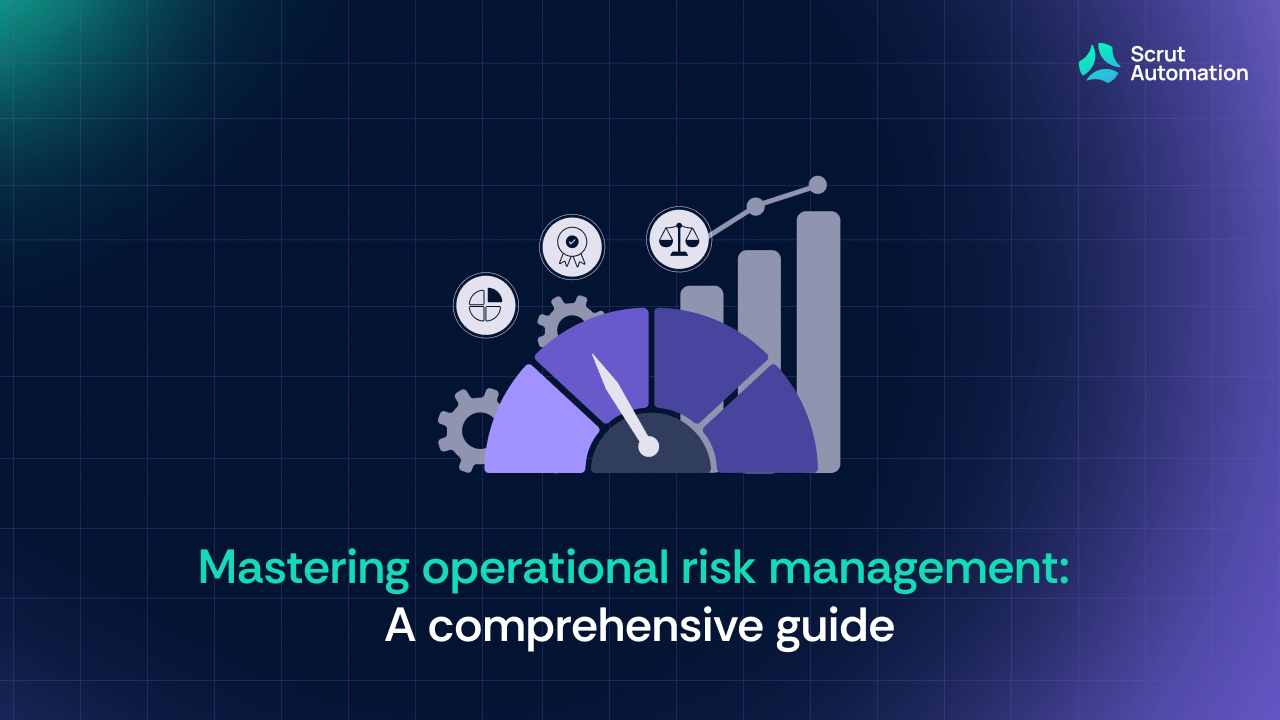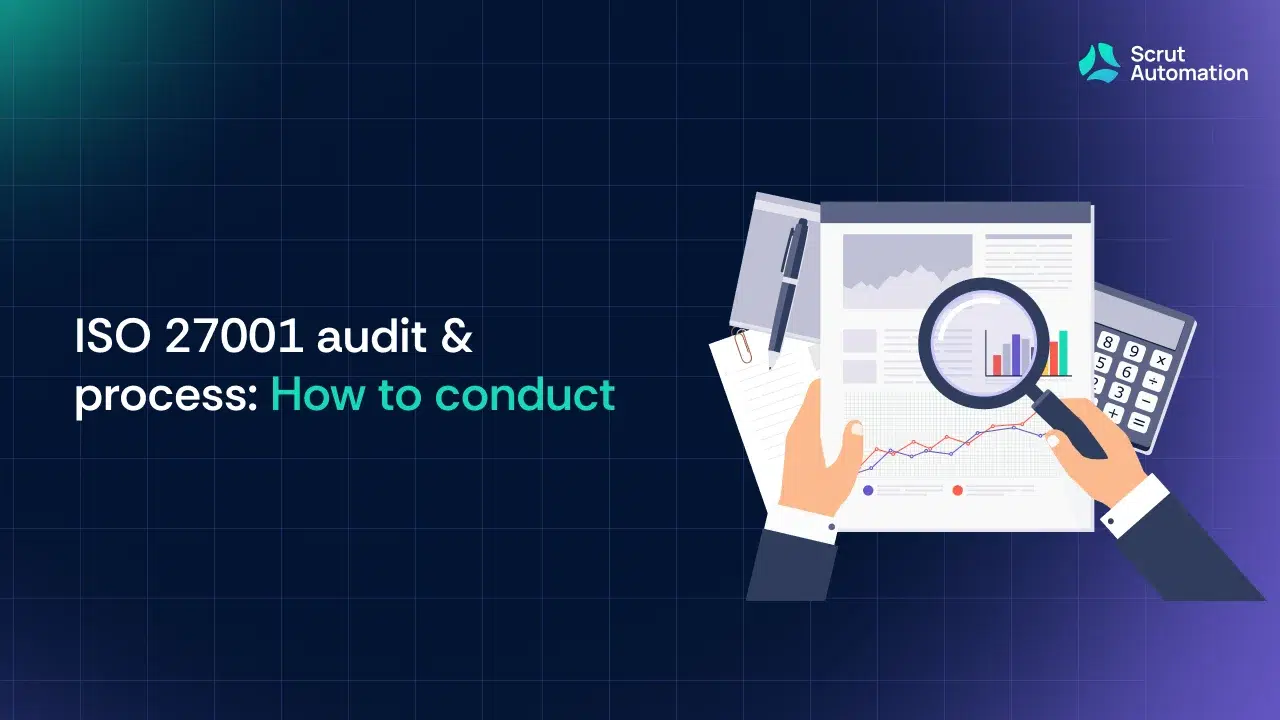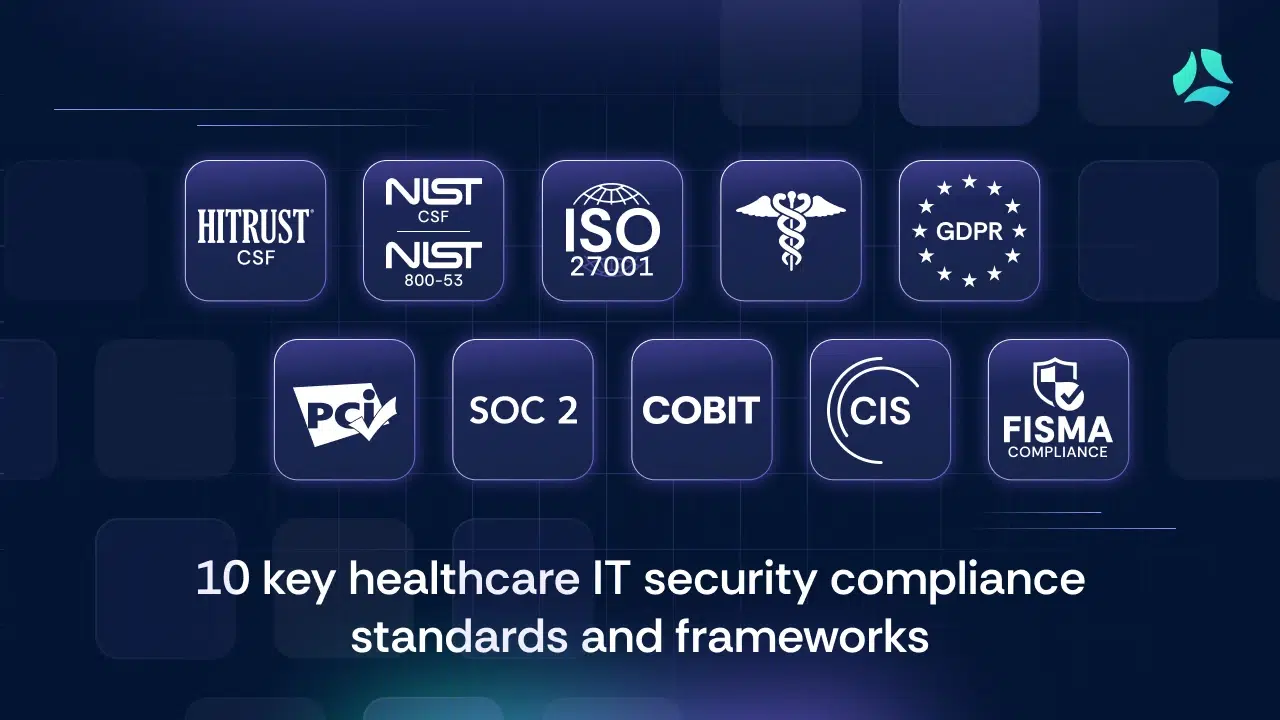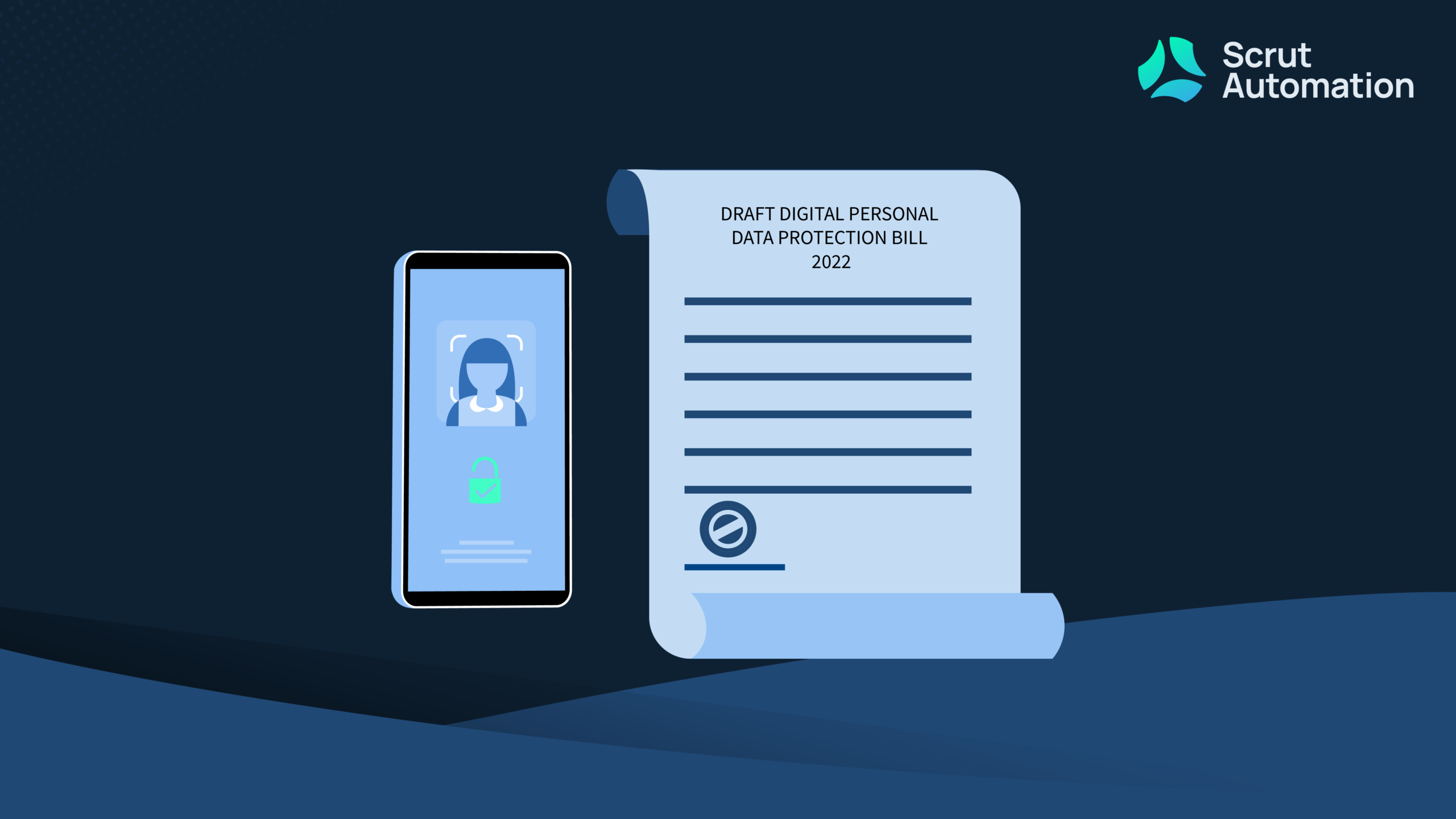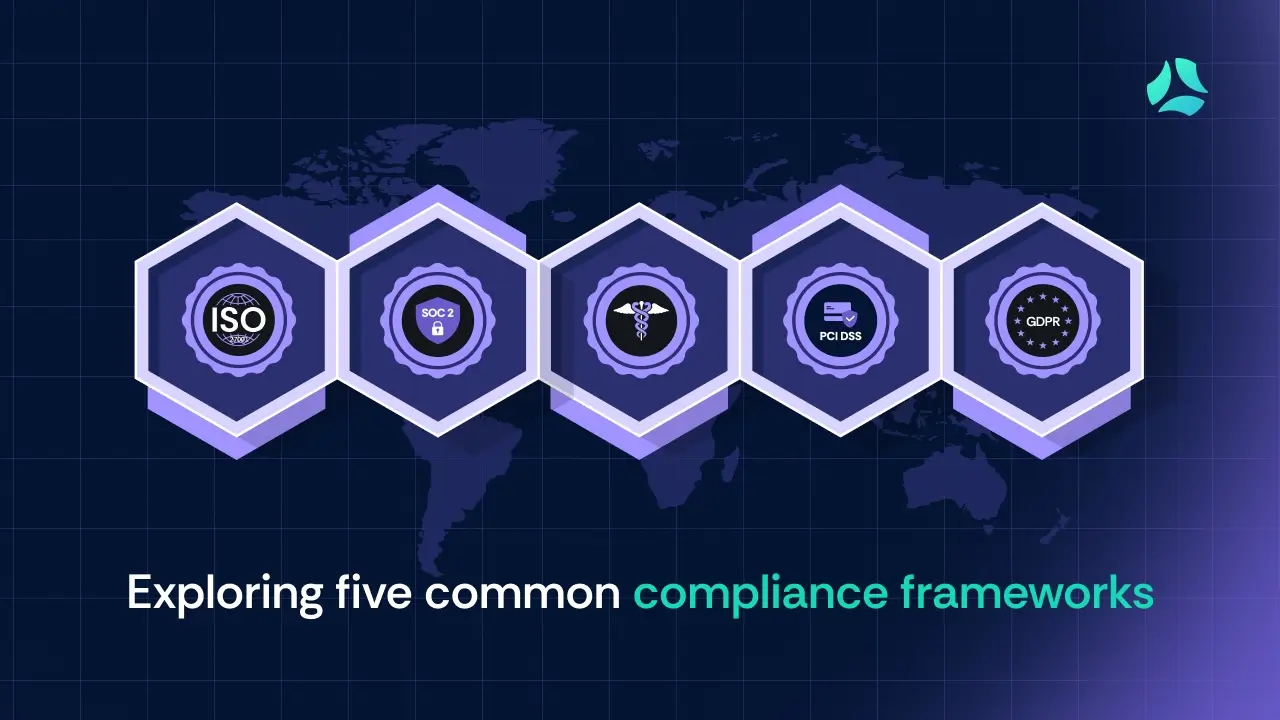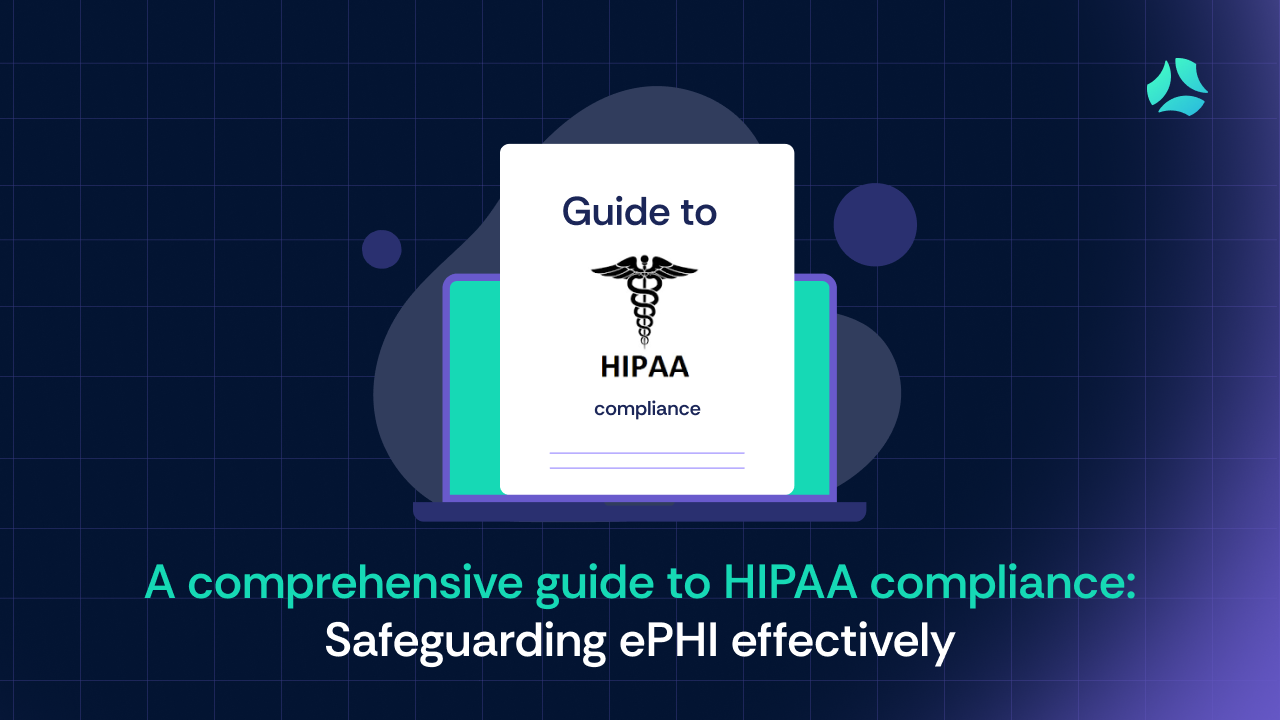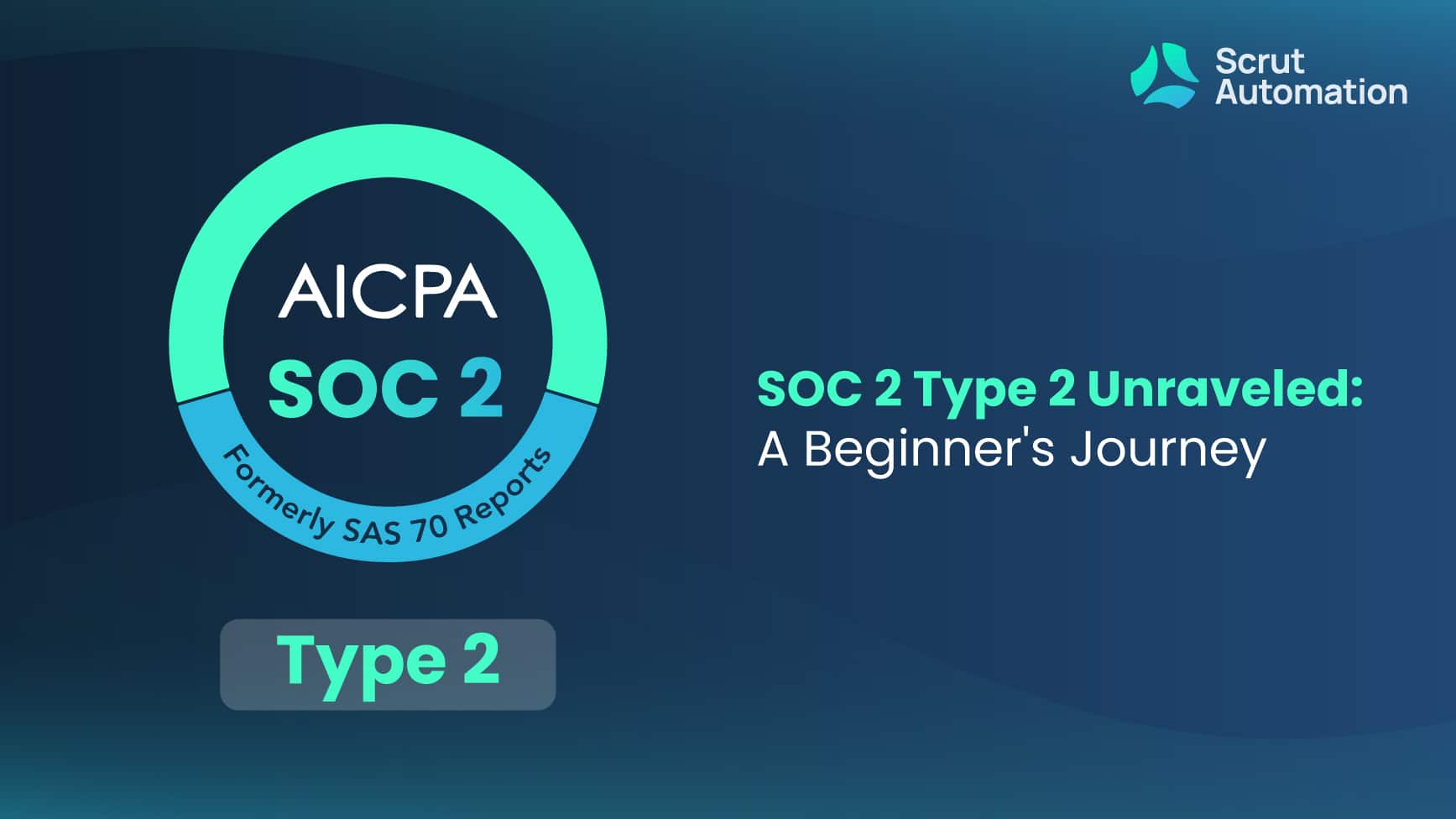Operational risk management (ORM) is a critical aspect of any organization’s strategy to ensure its longevity and success. Organizations should implement operational risk management to protect themselves from potential losses arising from ineffective processes, human errors, system failures, or external events.
By anticipating and mitigating these risks, organizational risk management ensures business resilience and continuity, helping organizations avoid costly disruptions and maintain smooth operations.
Additionally, a robust organizational risk management framework enables organizations to make informed decisions, improve control measures, and enhance overall business performance. This proactive approach not only safeguards assets and reputation but also contributes to sustainable growth and stability in an increasingly complex and unpredictable business environment.
This article will venture into the meaning of organizational risk management, its process, and how Scrut can help you implement it.
What is operational risk management?
Operational risk management is a systematic process designed to identify, assess, prioritize, and mitigate risks that arise from an organization’s day-to-day operations. These risks can stem from various sources, including internal processes, human errors, system failures, and external events.
Operational risk management involves a continual cycle of risk assessment, decision-making, and implementation of strategies to minimize potential losses and enhance business continuity. By proactively managing operational risks, organizations can improve their resilience, maintain smooth operations, and safeguard their assets and reputation.
Operational risk management is a subset of the larger enterprise risk management framework. Effective enterprise risk management requires integrating operational risk management practices to ensure that operational disruptions do not compromise the overall strategic goals and stability of the organization.
Operational risk management focuses specifically on risks arising from internal processes, human errors, system failures, and external events that affect day-to-day operations.
Enterprise risk management, on the other hand, encompasses a broader scope, including strategic, financial, compliance, and reputational risks.
Examples of operational risks
Operational risks encompass a wide range of issues that can disrupt business operations. Examples include:
- Internal fraud: Dishonest actions by employees, such as embezzlement or falsifying financial records.
- External fraud: Activities such as hacking, phishing attacks, or theft by external parties.
- Process management failures: Inefficiencies or breakdowns in business processes, leading to errors and delays.
- Employment practices and workplace safety: Non-compliance with labor laws, unsafe working conditions, or inadequate training resulting in accidents.
- Data compromise: Loss or theft of sensitive information due to poor data management or cybersecurity breaches.
- Third-party risk: Risks arising from the failure of external vendors or partners to deliver goods or services as expected.
- Human error: Mistakes made by employees due to lack of knowledge, oversight, or fatigue.
- Technical errors: Failures in IT systems or machinery that disrupt operations.
- Regulatory risk: Risks from non-compliance with laws and regulations, resulting in fines or sanctions.
- Uncontrollable events: Natural disasters, pandemics, or geopolitical events that impact business operations.
What are the components of operational risk management?
Operational risk management comprises several key components designed to identify, assess, mitigate, and monitor risks that can disrupt daily operations. The primary components of ORM include:
- Risk and Control Self-Assessment (RCSA): A systematic process where business units identify and evaluate their risks and the effectiveness of controls in place to mitigate these risks.
- Key Risk Indicators (KRIs): Metrics used to provide early signals of increasing risk exposures in various areas of operations.
- Risk incident recording: Documenting and analyzing incidents that have occurred to understand their causes and prevent future occurrences.
- Risk assessment and measurement: Evaluating the potential impact and likelihood of identified risks.
- Risk mitigation strategies: Implementing measures to reduce the likelihood and impact of risks. This can include transferring, avoiding, accepting, or mitigating risks.
- Monitoring and reporting: Continuously track risk indicators and report on the risk management process to ensure ongoing effectiveness and compliance.
What are the primary objectives of operational risk management?
The primary objectives of operational risk management are to identify, assess, mitigate, and monitor risks associated with an organization’s daily operations. These objectives include:
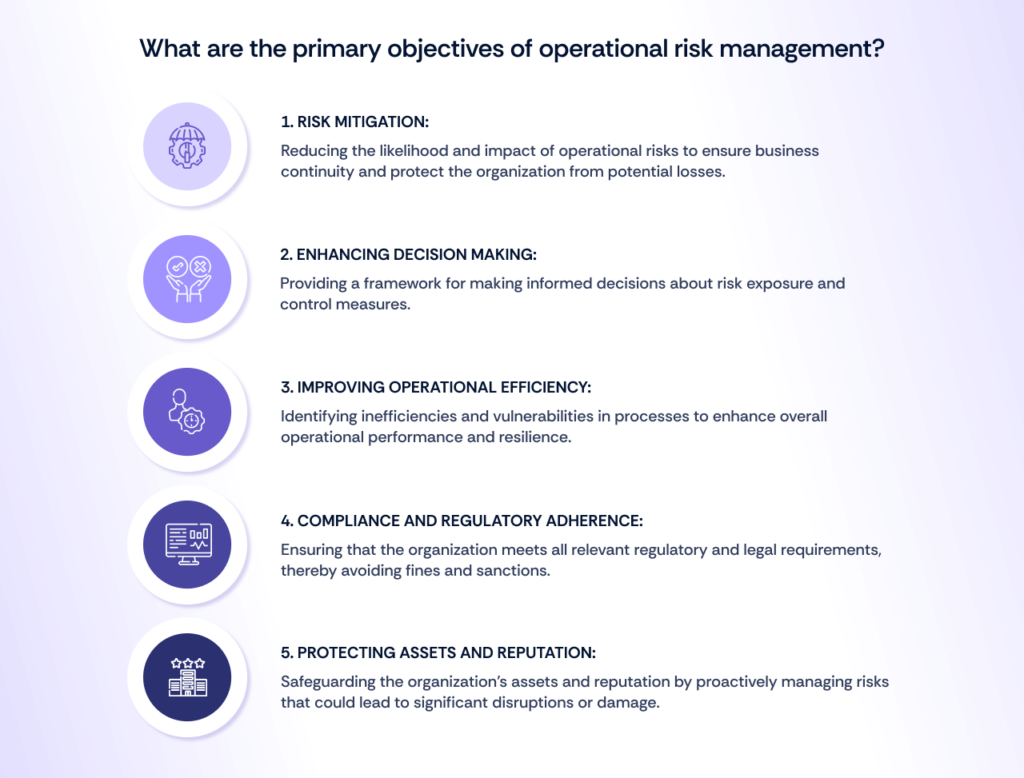
Which are the categories of operational risk management?
Operational risk management can be broadly categorized into the following types:
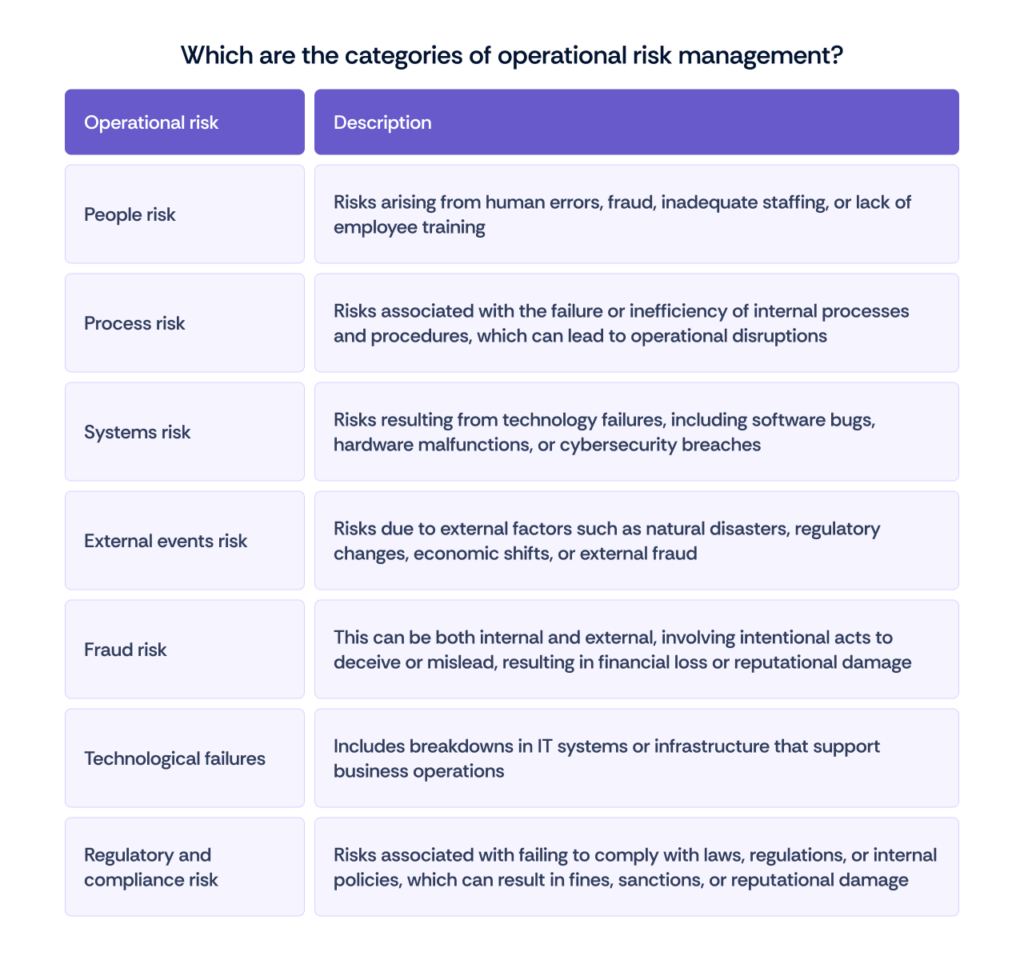
How can you implement operational risk management in your organization?
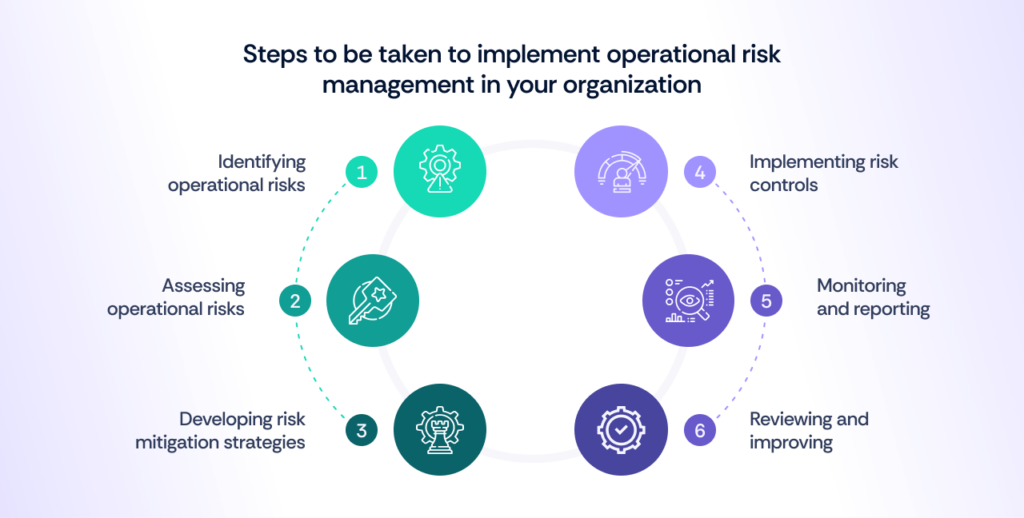
Implementing operational risk management in your organization involves several key steps to ensure a comprehensive and effective approach. Here’s a step-by-step guide:
Step 1: Identifying operational risks
- Conduct brainstorming sessions and workshops with key stakeholders to gather insights on potential risks.
- Review historical data and past incidents to identify recurring risks and trends.
- Use techniques like SWOT analysis to identify strengths, weaknesses, opportunities, and threats related to operations.
Step 2: Assessing operational risks
- Evaluate the likelihood and impact of identified risks using qualitative and quantitative assessment methods.
- Prioritize risks based on their potential impact on the organization’s operations and objectives.
Step 3: Developing risk mitigation strategies
- Create strategies to address each identified risk, such as risk avoidance, reduction, transfer, or acceptance.
- Develop action plans and controls to mitigate the effects of risks on operations.
Step 4: Implementing risk controls
- Integrate risk mitigation strategies into the organization’s daily operations and business processes.
- Ensure that all employees are aware of and understand the risk controls in place.
Step 5: Monitoring and reporting
- Continuously monitor risk indicators and the effectiveness of risk controls.
- Implement regular reporting mechanisms to keep stakeholders informed about risk management activities and any emerging risks.
Step 6: Reviewing and improving
- Regularly review and update the operational risk management framework to adapt to changing conditions and new risks.
- Conduct periodic audits and assessments to ensure the operational risk management process remains effective and relevant.
What are the challenges in operational risk management, and how can they be overcome?
| Challenge | Description | Solution |
| Lack of resources and expertise | Many organizations lack the skilled personnel and resources necessary for effective operational risk management (ORM). | Invest in training programs to develop in-house expertise and consider hiring external risk management consultants. Additionally, leverage automated risk management tools to streamline processes and reduce the burden on staff. |
| Poor communication and coordination | Ineffective communication between departments can lead to overlooked risks and inadequate risk mitigation efforts. | Establish a clear ORM framework with defined objectives, scope, and stakeholder roles. Ensure regular communication through meetings and updates, and utilize collaboration tools to keep all parties informed and aligned. |
| Managing unforeseen risks | While known risks can be managed effectively, unforeseen risks present a significant challenge. | Implement a proactive risk identification process that includes scenario planning and stress testing. Encourage a culture of vigilance where employees are empowered to report potential risks. |
| IT disruptions and data compromise | IT disruptions and data breaches are common operational risks that can severely impact business operations. | Strengthen cybersecurity measures and develop robust IT disaster recovery plans. Regularly update and test these plans to ensure they are effective in mitigating IT-related risks. |
| Third-party risks | Reliance on third-party vendors can introduce additional risks related to their operations and compliance. | Conduct thorough due diligence when selecting vendors and implement continuous monitoring of their performance and compliance. Establish clear contracts that outline risk management expectations and responsibilities. |
How can Scrut help you implement an operational risk management system?
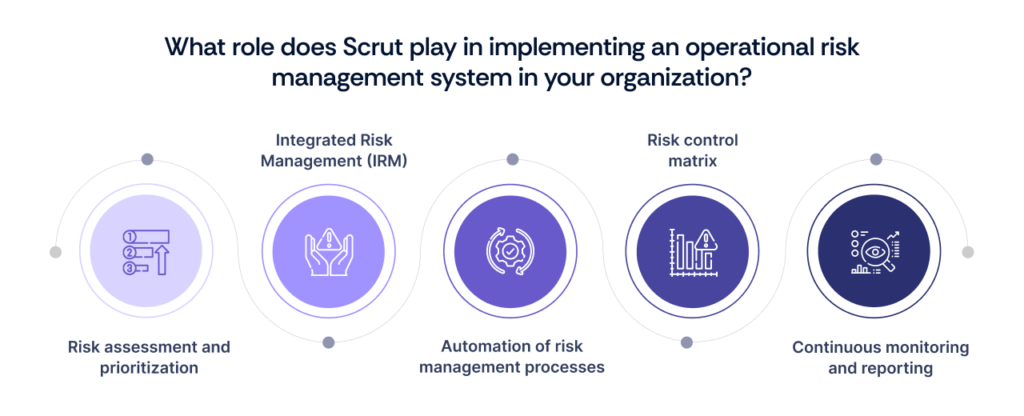
There are many types of operational risk management software in the market today. Scrut provides a comprehensive solution to implement an effective operational risk management system through several key features and functionalities:
- Risk assessment and prioritization: Scrut helps organizations assess and prioritize risks by combining all elements of risk management. This includes mapping out risks, assessing their impact, and determining their likelihood, which aids in creating a prioritized risk management plan.
- Integrated Risk Management (IRM): Scrut’s integrated approach goes beyond traditional risk assessment and response strategies by seamlessly incorporating risk management into the overall business processes. This holistic view ensures that all risks are identified, assessed, and managed in a coordinated manner.
- Automation of risk management processes: Scrut automates key risk management processes, including risk identification, evaluation, mitigation, and monitoring. This automation streamlines operations, reduces manual errors, and ensures a more efficient risk management process.
- Risk control matrix: Scrut provides tools like the Risk Control Matrix, which helps organizations implement control measures to meet compliance standards and mitigate compliance-related risks effectively. This ensures that all control measures are properly documented and monitored.
- Continuous monitoring and reporting: With Scrut, organizations can continuously monitor their risk posture through real-time dashboards and automated reporting. This helps in keeping track of risk levels and the effectiveness of mitigation strategies, allowing for timely adjustments.
Final thoughts
In conclusion, implementing a robust Operational Risk Management (ORM) framework is crucial for organizations to protect against losses from ineffective processes, human errors, system failures, or external events. By proactively managing these risks, organizations can ensure business continuity, avoid disruptions, and maintain smooth operations.
Tools like Scrut can significantly aid in this process by offering integrated risk management solutions, automation of risk processes, and continuous monitoring, ensuring effective handling of operational risks.
Ready to enhance your organization’s risk management? Discover how Scrut’s comprehensive solutions can streamline your Operational Risk Management processes, ensuring business continuity and resilience. Schedule a demo today and take the first step towards a safer, more efficient future.
FAQs
Operational Risk Management (ORM) is a systematic process designed to identify, assess, prioritize, and mitigate risks arising from an organization’s day-to-day operations. These risks can stem from internal processes, human errors, system failures, and external events.
The primary components include Risk and Control Self-Assessment (RCSA), Key Risk Indicators (KRIs), risk incident recording, risk assessment and measurement, risk mitigation strategies, and monitoring and reporting.
Challenges include lack of resources and expertise, poor communication and coordination, managing unforeseen risks, IT disruptions, and third-party risks. These can be overcome by investing in training, improving communication, proactive risk identification, strengthening cybersecurity, and conducting thorough due diligence on vendors.

Megha Thakkar has been weaving words and wrangling technical jargon since 2018. With a knack for simplifying cybersecurity, compliance, AI management systems, and regulatory frameworks, she makes the complex sound refreshingly clear. When she’s not crafting content, Megha is busy baking, embroidering, reading, or coaxing her plants to stay alive—because, much like her writing, her garden thrives on patience. Family always comes first in her world, keeping her grounded and inspired.
